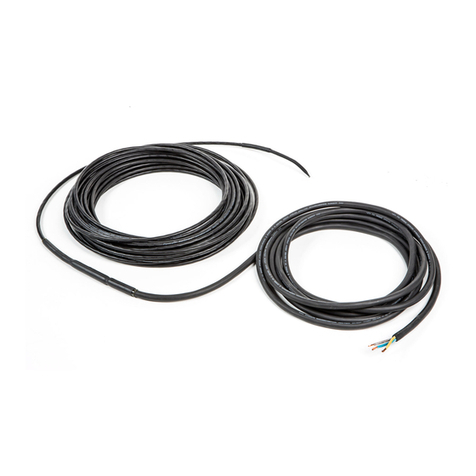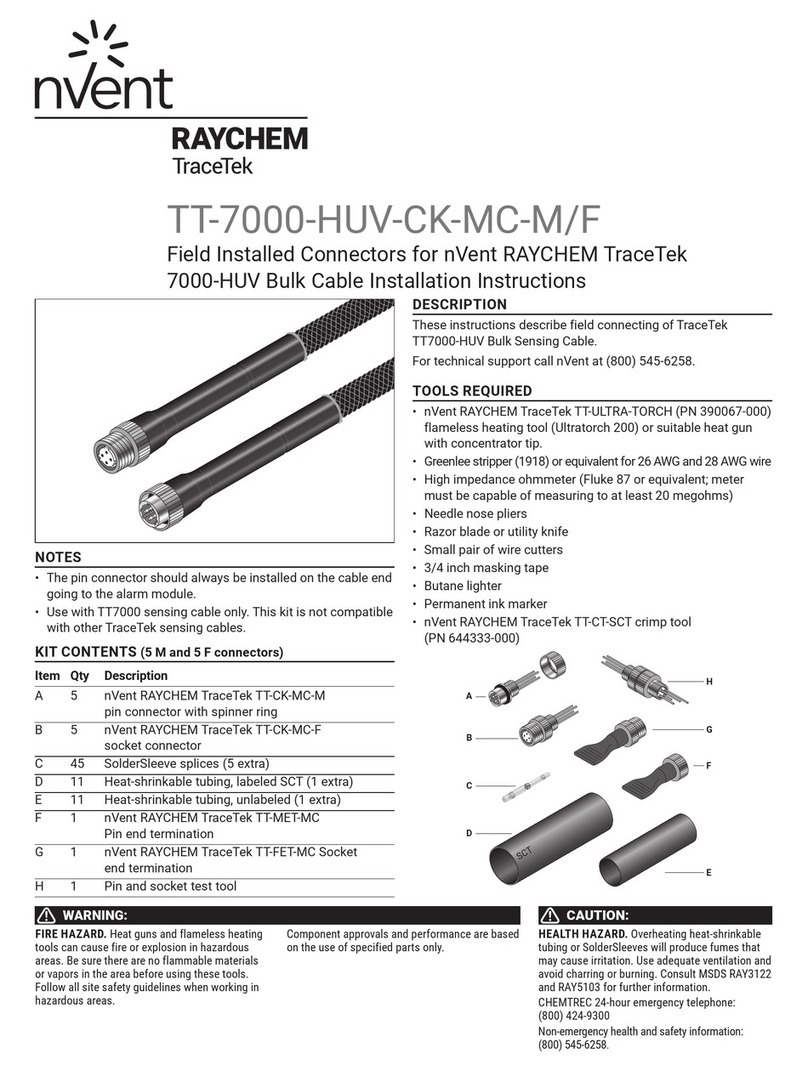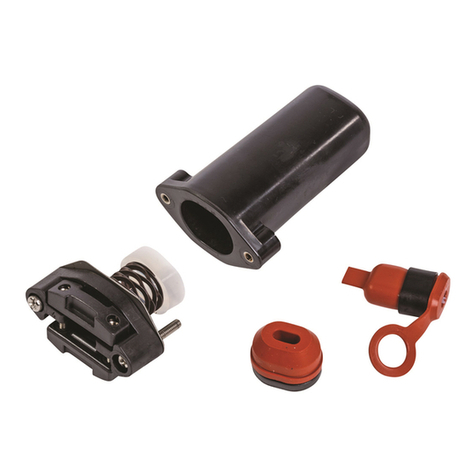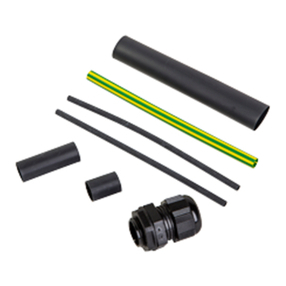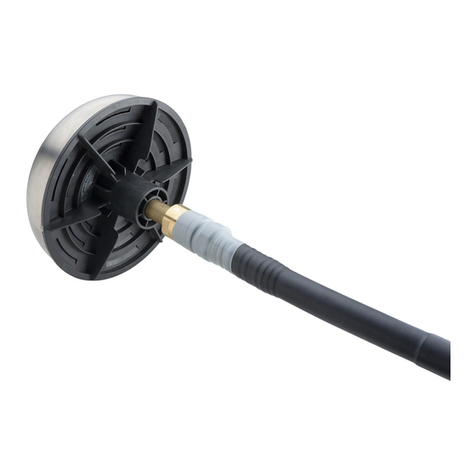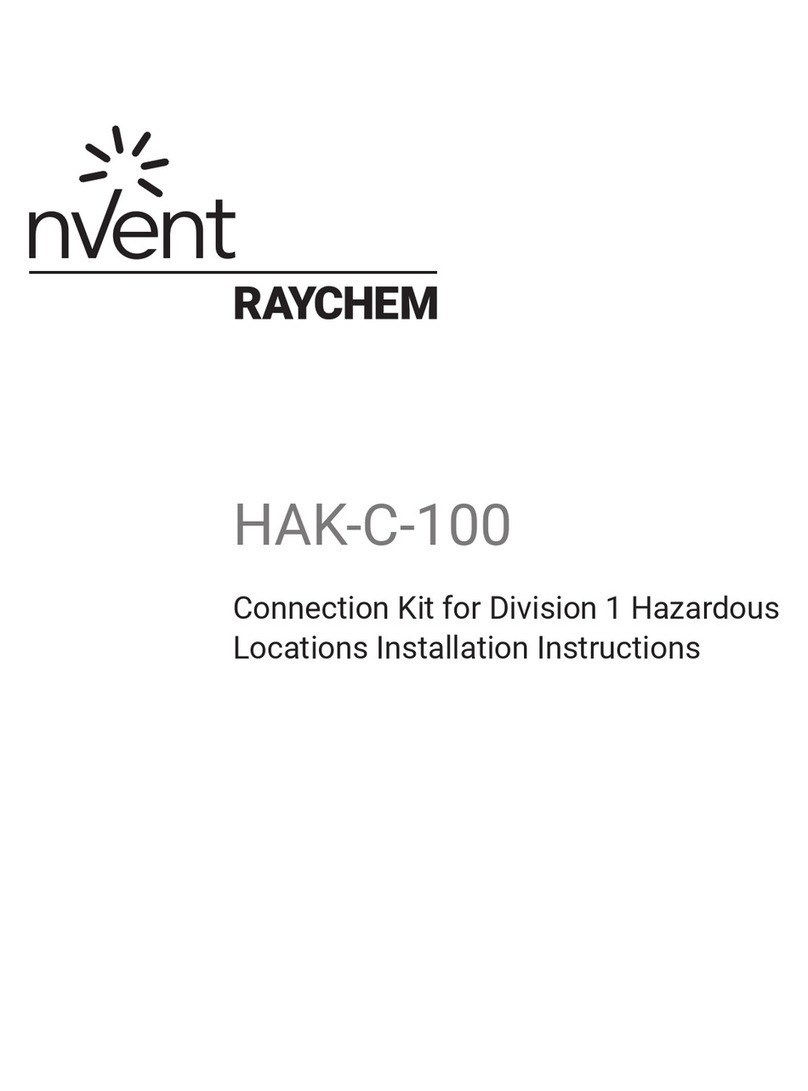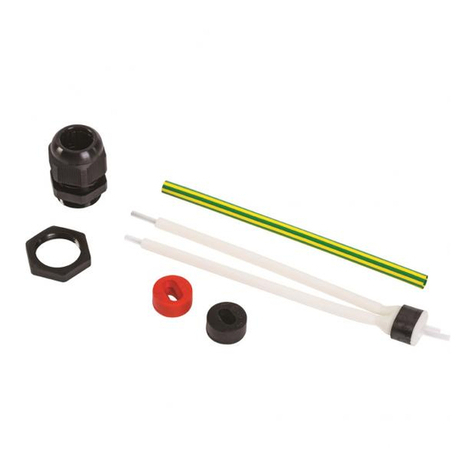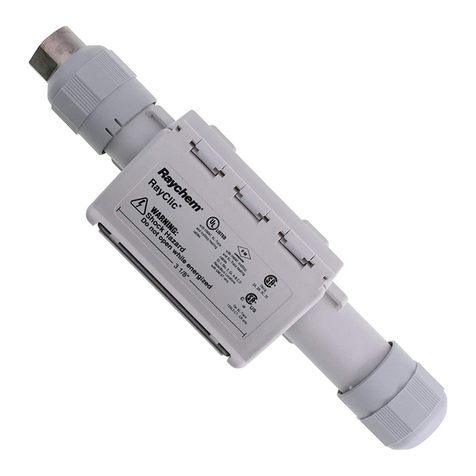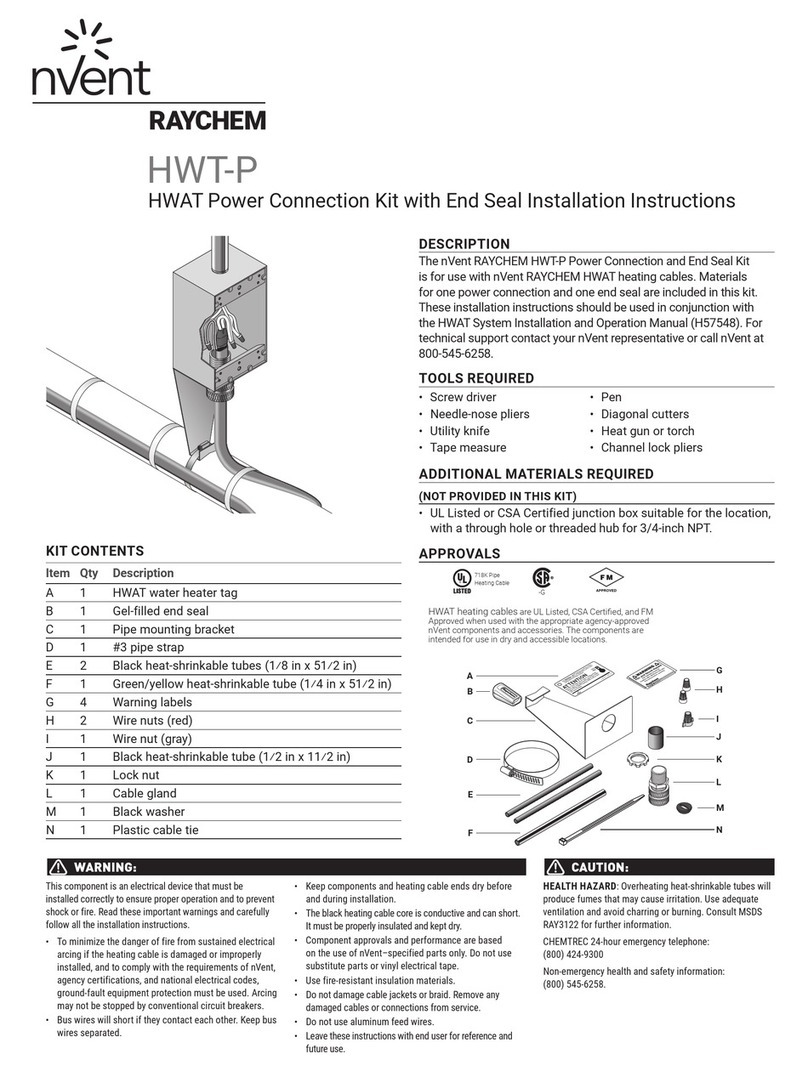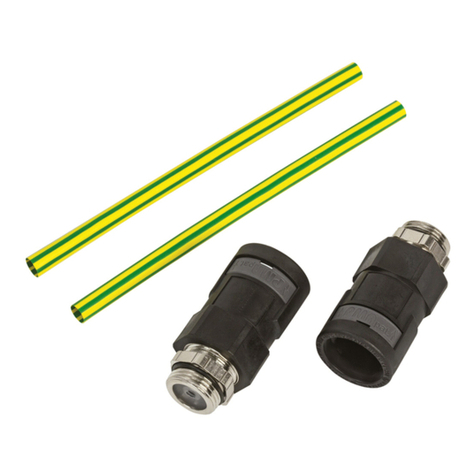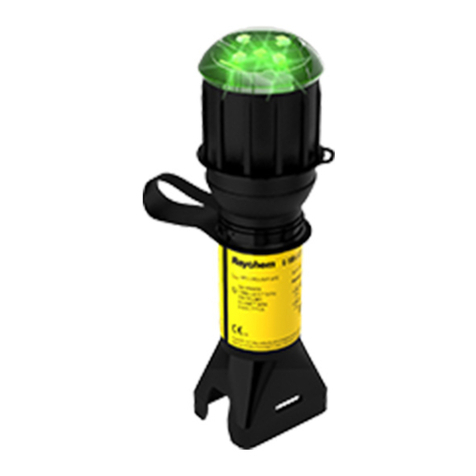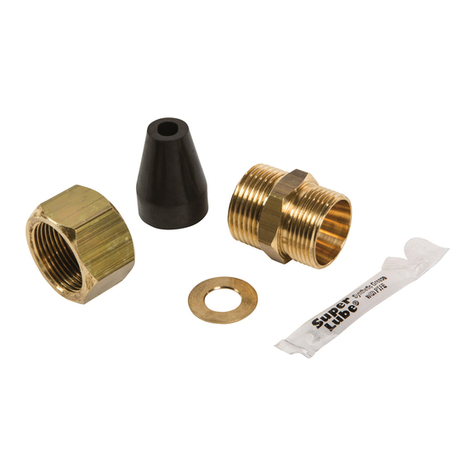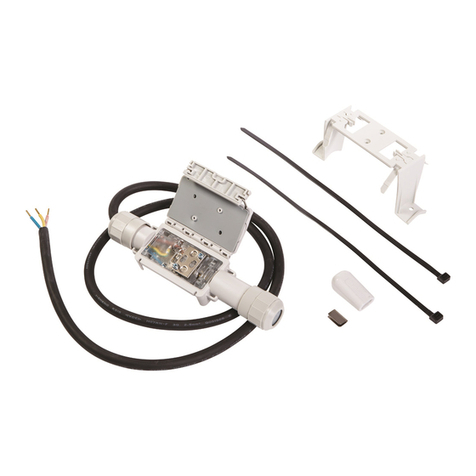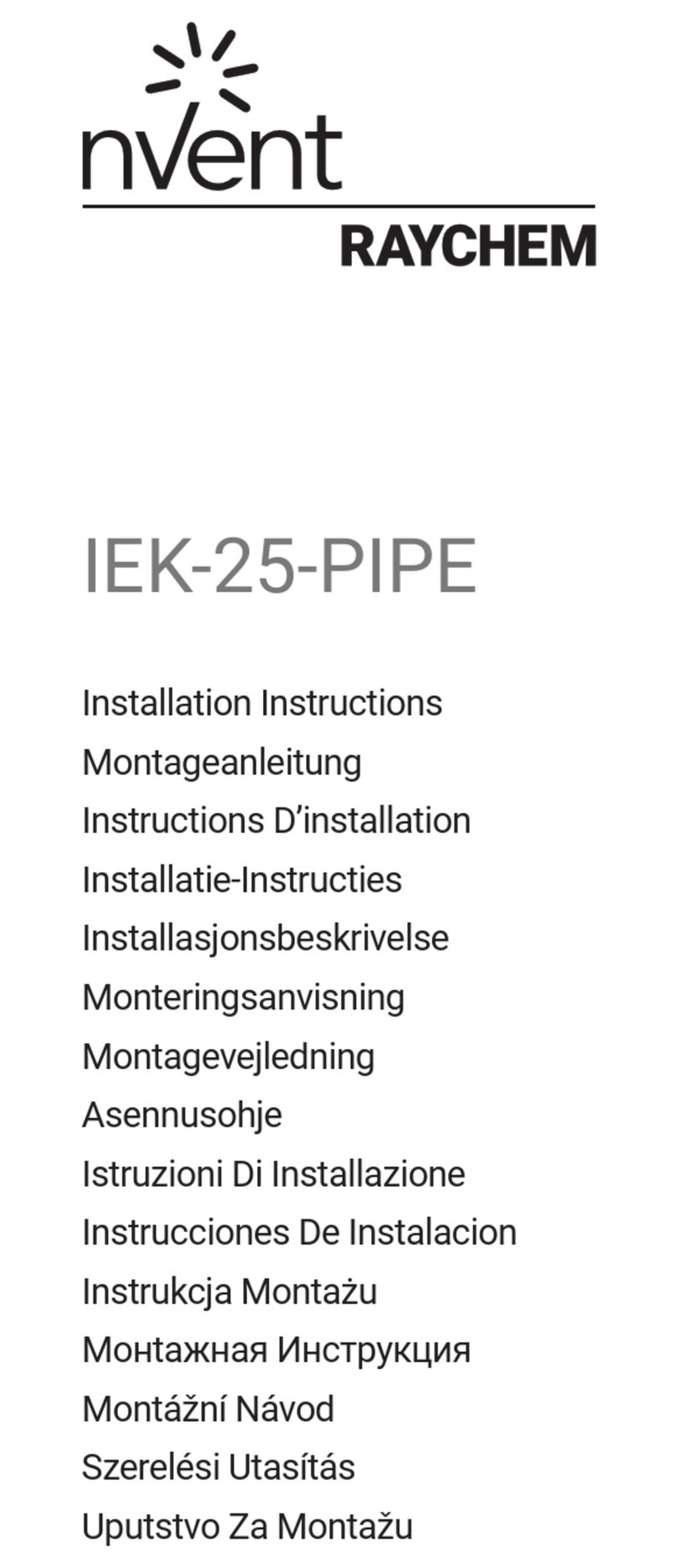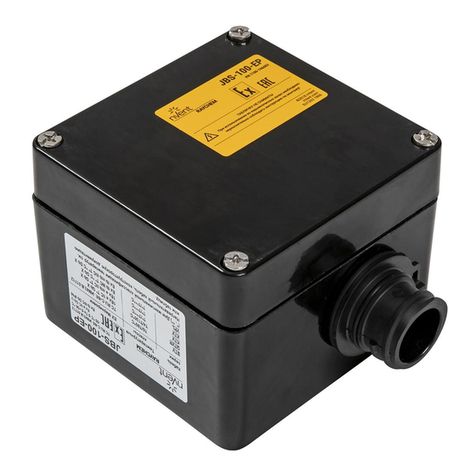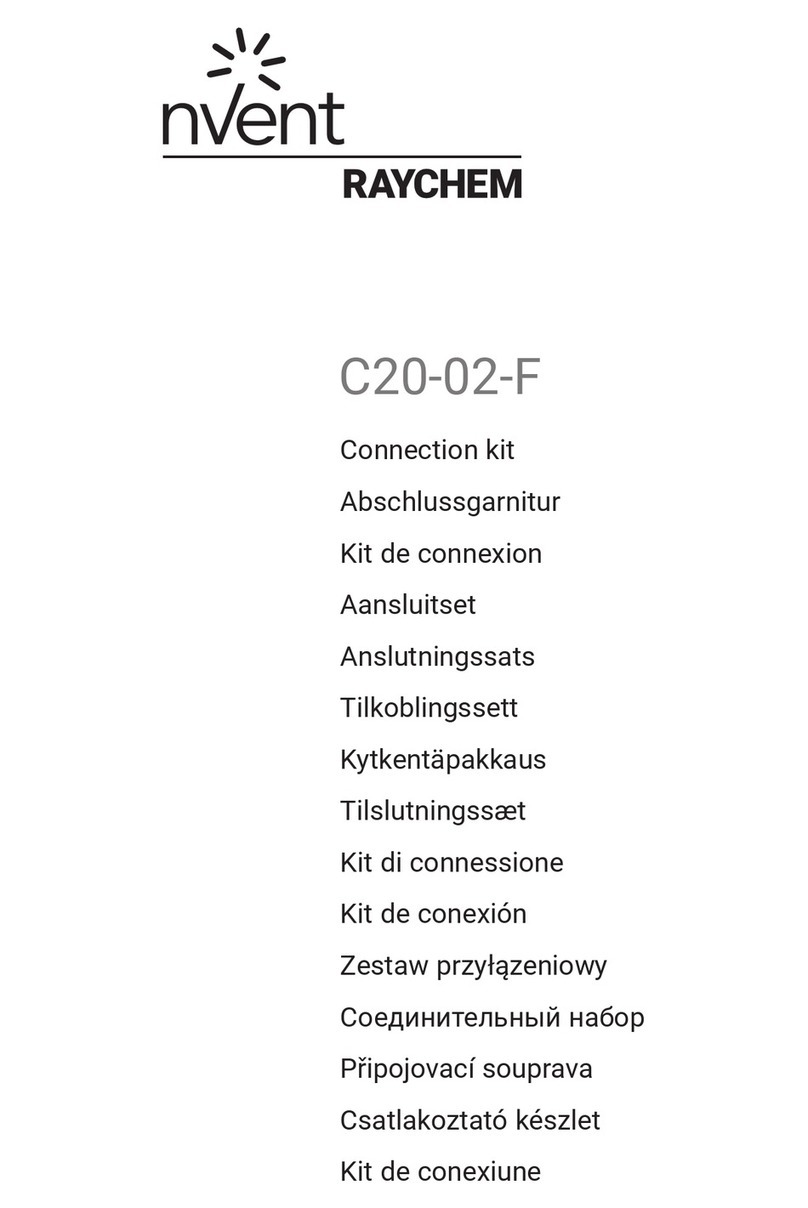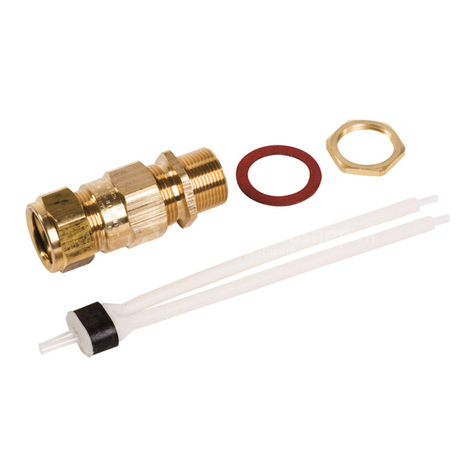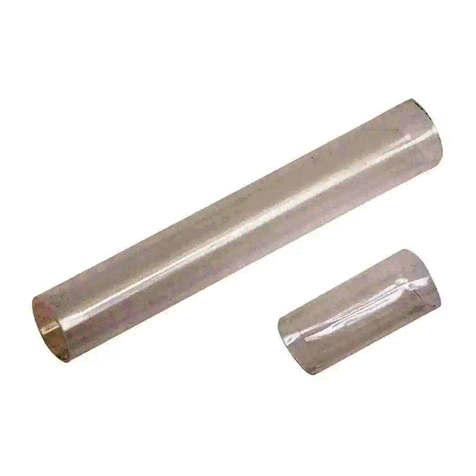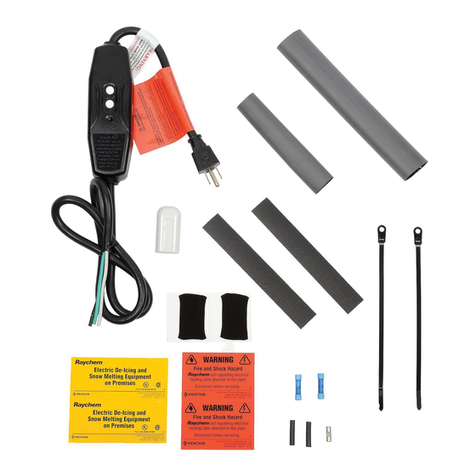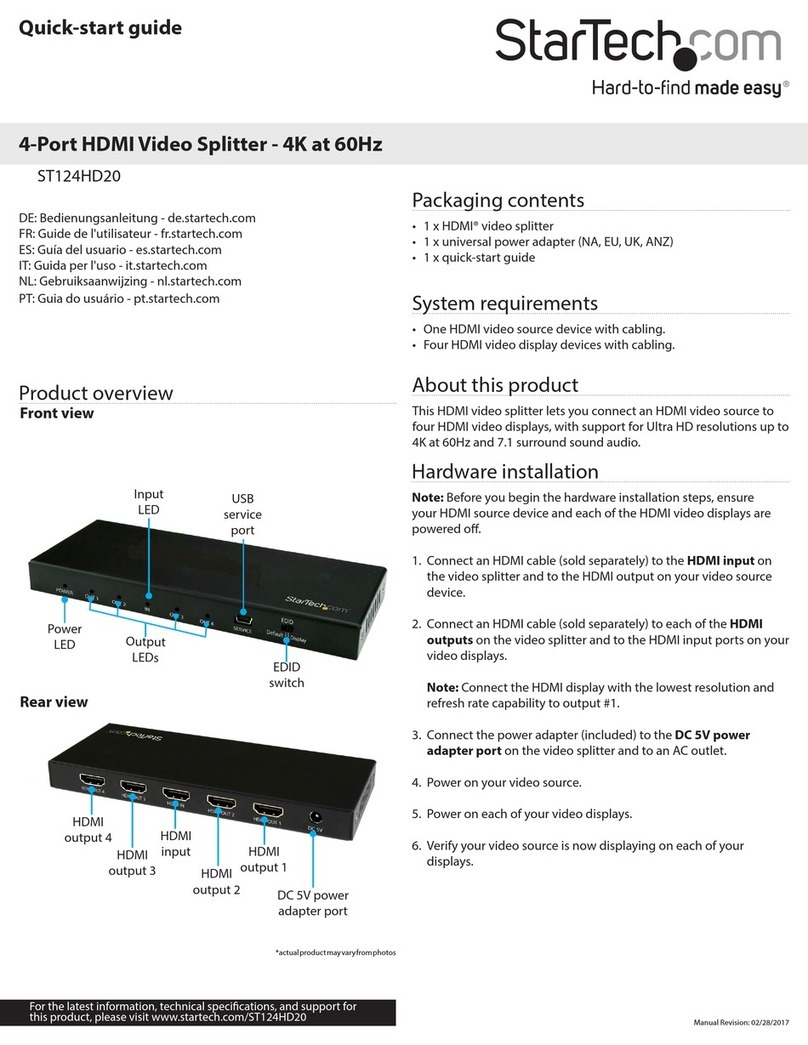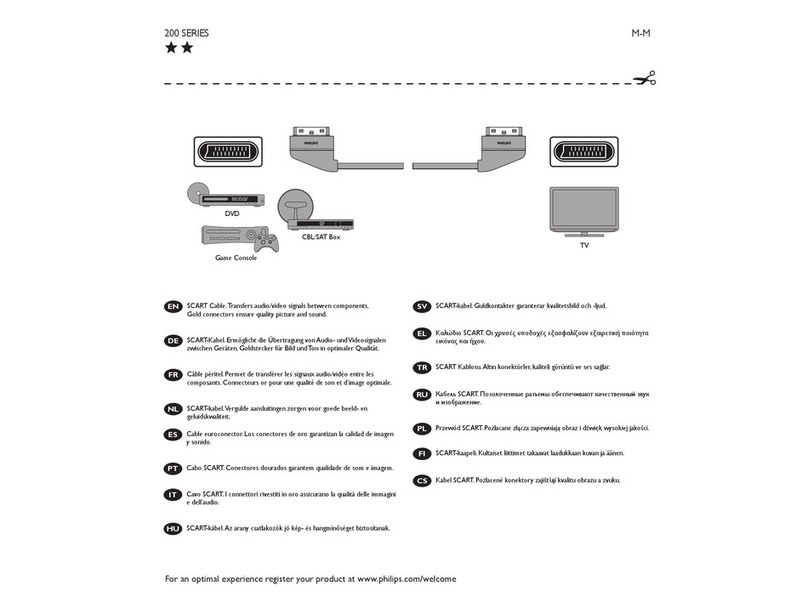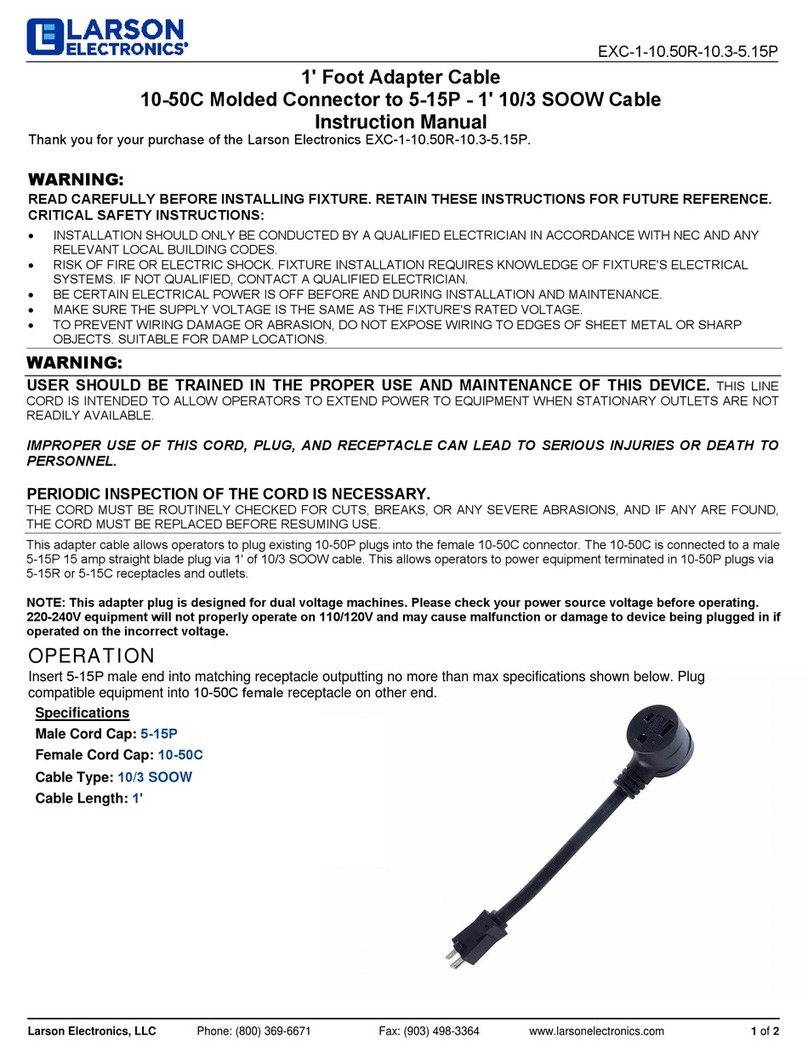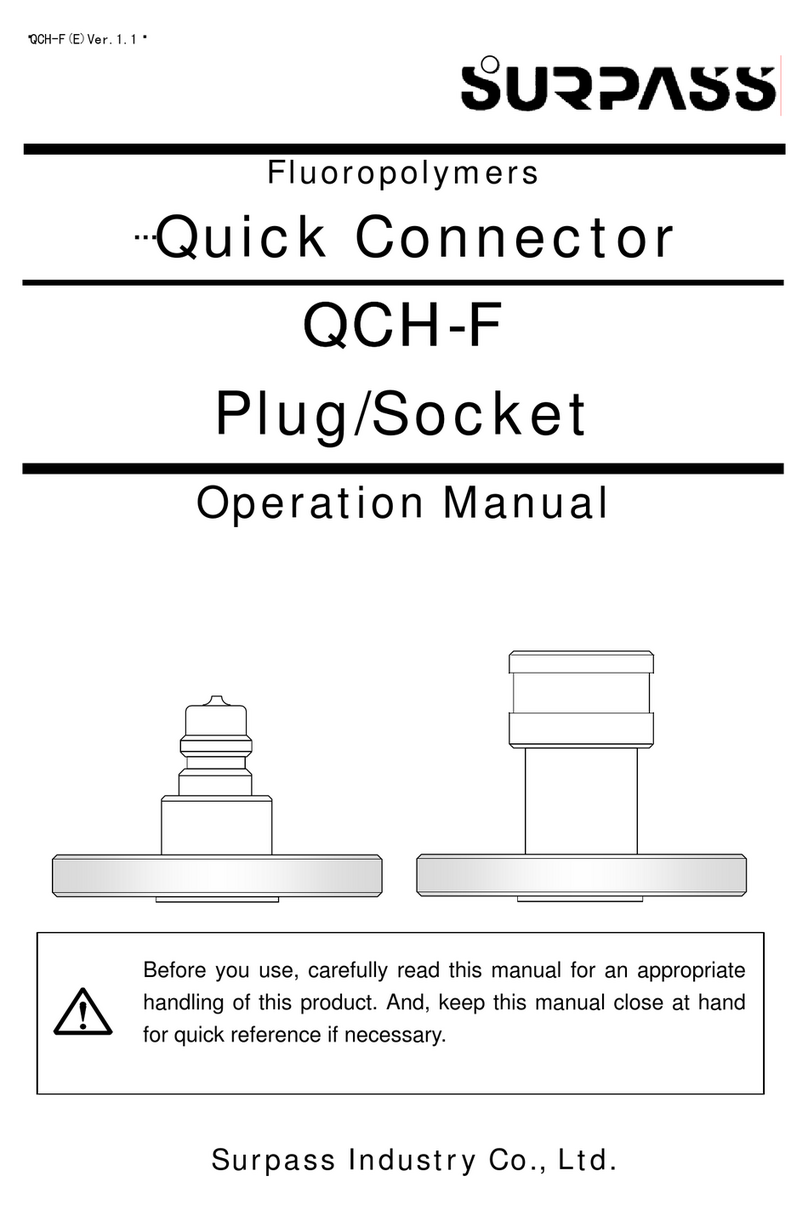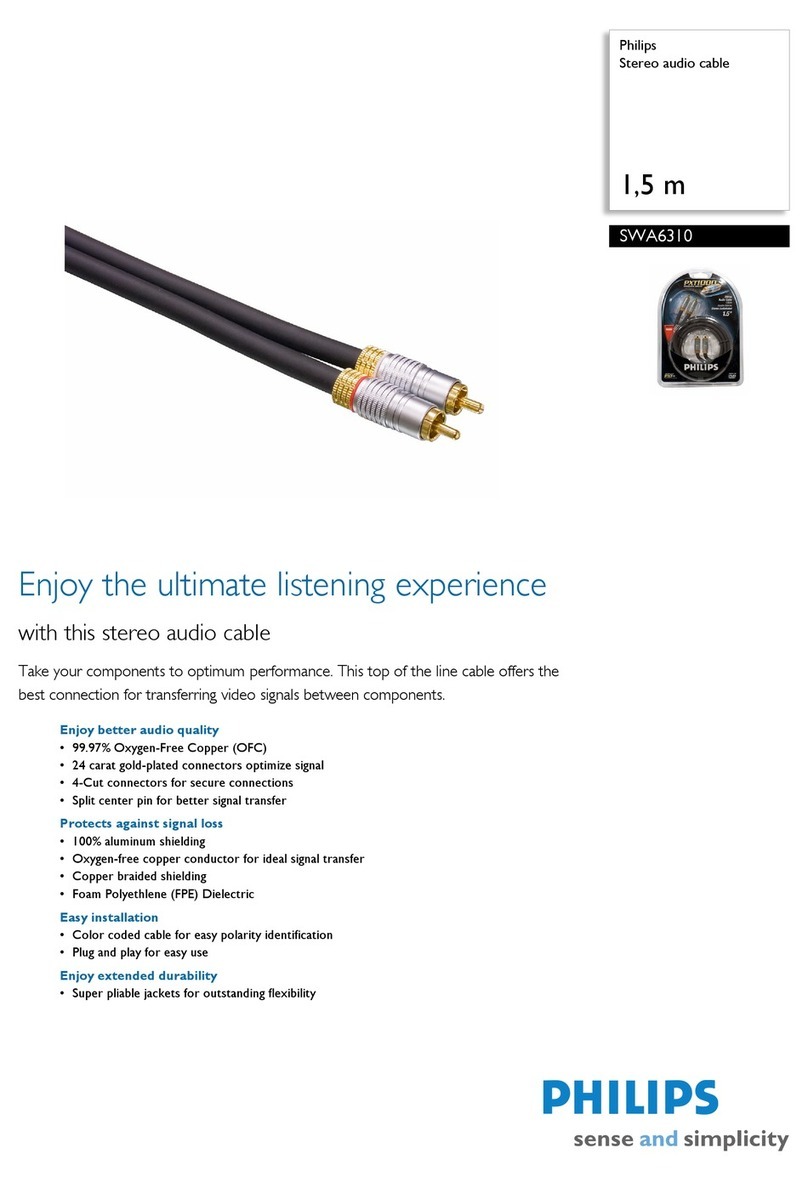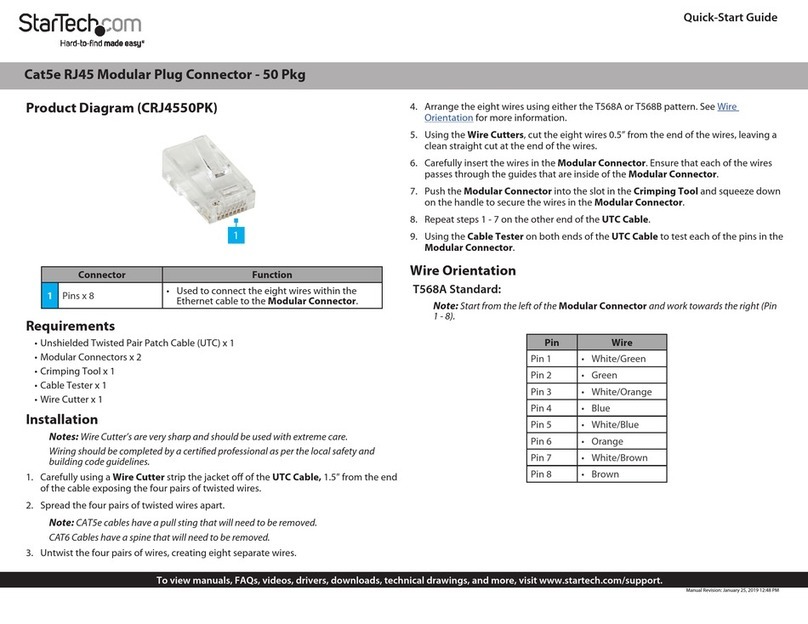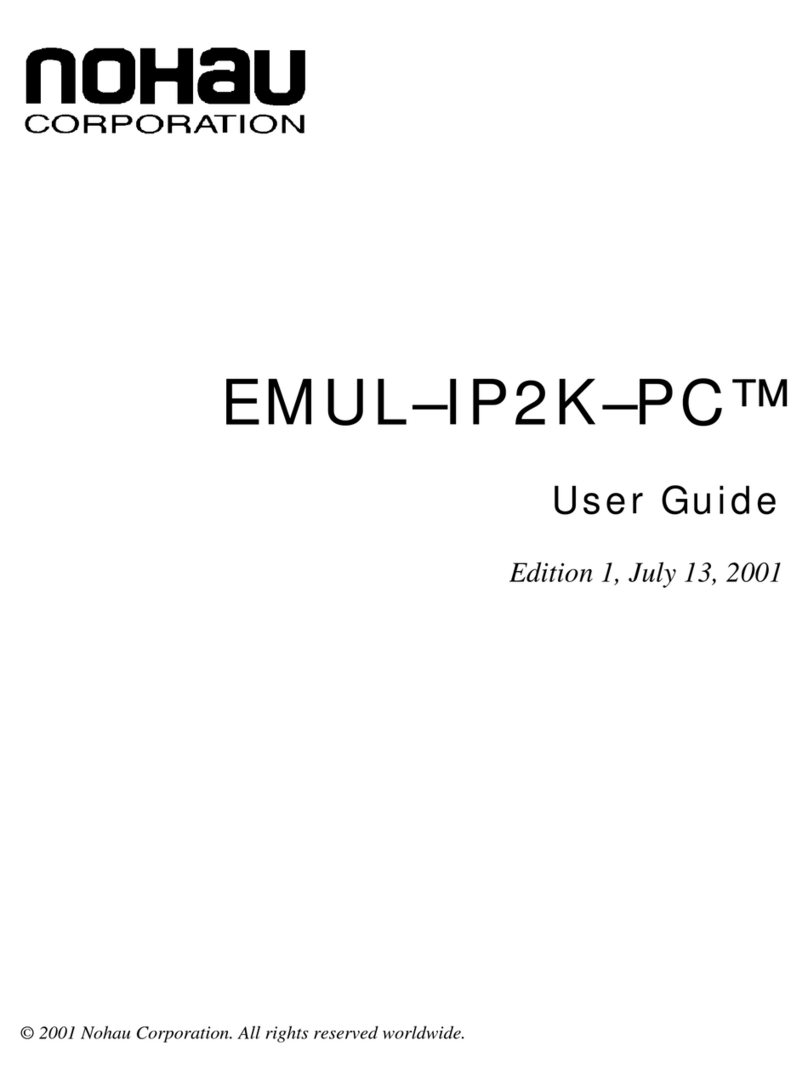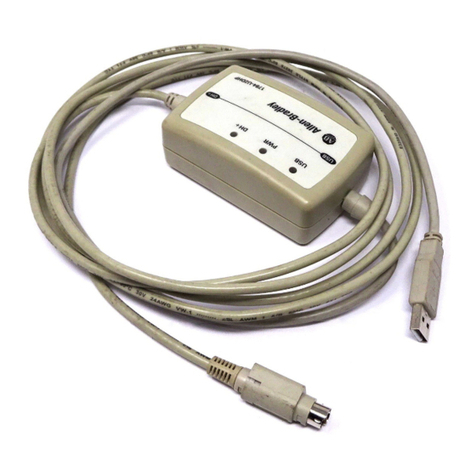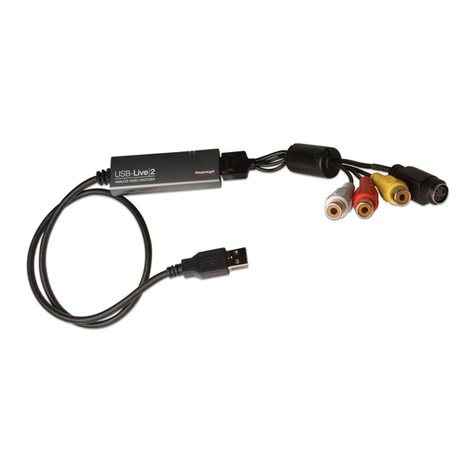
©2018 nVent. All nVent marks and logos are owned or licensed by nVent Services GmbH or its affiliates. All other trademarks are the property of their respective owners.
nVent reserves the right to change specifications without notice.
Raychem-IM-H59076 -E100LRAandE100LRE-EN-1805 PN P000001648
nVent.com
Troubleshooting Guide
Problem Troubleshooting steps
Light is dim or off. 1. Check that light voltage rating matches supply voltage for heat-tracing circuit. Supply voltage lower or higher than light
rating will cause malfunctions.
2. Check that heat-tracing circuit is energized. Although the circuit breaker is on, control devices such as thermostats
may switch heating cable off.
3. Following electrical safety procedures, disconnect supply voltage, unscrew light from end seal base and check that
crimp connections to heating cable bus wires are tight and not crossed or shorted. Loose connections or shorts will
cause malfunctions.
4. With circuit off, attach volt meter leads to crimps. Energize circuit and measure voltage at light. Use the following table
to determine whether the voltage measured is within the acceptable range of 100-305 Vac.
• If voltage at light is in acceptable range and connections are good, the light may be defective or damaged.
Replacelight.
• If there is no voltage at the light, there may be breaks in the heating cable between the power connection and
theendseal. Check for splice or tee connections that may be left open.
• If voltage at light is above specified limits, the light may be off. Voltages above specified range can damage light.
Replace light with correct version for line supply voltage or adjust supply voltage accordingly.
• If voltage at light is present but below specified limits, the light may be dim or off. The following table lists typical
causes for low voltages and possible solutions.
Cause Solution
Supply voltage at start of circuit is low (light is designed
to work with supply voltages within 10% of nominal).
Increase power wire gauge size to reduce voltage drop
between panel and heating cable power connection.
Heating cable length is too long (light is designed to
work with published maximum circuit lengths).
Split heating cable into multiple circuits. Shorten length
of heating cable.
Heating cable is started under very cold conditions
(heating-cable voltage drop is very high for first minutes
of very cold start-up).
Wait for heating cable to warm up. Voltage at light
willincrease.
Heating cable controller is reducing voltage (light may not
work with controllers that phase fire to reduce line voltage).
Turn off phase firing function in heating cable controller.
Problem Troubleshooting steps
Cap cannot be
tightened completely.
1. Check that heating cable is installed and stripped correctly. The top of the insulated parallel crimps should be
23/8 in (60 mm), or less, above the top of the plastic strain relief in the stand.
2. Check that core sealer is positioned properly. The end of the core sealer must be flush against the plastic strain relief
in the stand.
3. Check that the threads on the light and stand are clean. The connection wires between the heating cable and the light
should not be caught in stand threads.
North America
Tel +1.800.545.6258
Fax +1.800.527.5703
Europe, Middle East, Africa
Tel +32.16.213.511
Fax +32.16.213.604
Asia Pacific
Tel +86.21.2412.1688
Fax +86.21.5426.3167
Latin America
Tel +1.713.868.4800
Fax +1.713.868.2333
